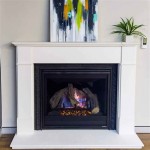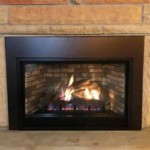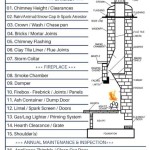Wood Burning Fireplace Insert Installation: A Comprehensive Guide
A wood burning fireplace insert is a self-contained heating appliance designed to be placed inside an existing masonry or factory-built fireplace. These inserts offer improved heating efficiency compared to traditional open fireplaces, effectively converting a decorative hearth into a practical and reliable heat source. The installation process, while potentially manageable for experienced DIY enthusiasts, often necessitates professional expertise to ensure safety and adherence to building codes.
This article provides a comprehensive overview of wood burning fireplace insert installation, outlining essential steps and considerations for a successful and safe implementation. Comprehending these elements is crucial whether undertaking the project independently or hiring a qualified professional.
Pre-Installation Assessments and Preparations
Before commencing the installation, a thorough assessment of the existing fireplace and chimney is paramount. This evaluation identifies potential issues that could compromise the insert's performance or safety. This assessment typically involves several key steps:
First, a professional inspection of the chimney flue is required. This inspection verifies its structural integrity and identifies any blockages, such as bird nests, creosote buildup, or crumbling mortar. The chimney must be clean, sound, and properly sized to accommodate the insert's venting requirements. A video camera inspection is often used to visually assess the entire chimney length.
Second, the dimensions of the existing fireplace opening must be accurately measured. These measurements determine the maximum size of the insert that can be accommodated. The fireplace opening's height, width, and depth are critical factors in selecting a compatible insert model. Some inserts may require minor modifications to the fireplace opening for a proper fit.
Third, local building codes and regulations pertaining to wood burning appliances must be consulted. These codes vary significantly by region and dictate specific requirements for installation, venting, and clearances to combustible materials. Obtaining the necessary permits before starting any work is essential to avoid potential fines and ensure compliance. Failure to comply with regulations can also void manufacturer warranties.
Finally, the hearth extension's dimensions must be evaluated. The hearth extension is the non-combustible material extending from the fireplace opening into the room. Building codes specify minimum hearth extension requirements to protect flooring from stray sparks and embers. If the existing hearth extension is insufficient, it must be enlarged to meet code requirements.
The Installation Process: Step-by-Step Guide
The installation of a wood burning fireplace insert typically involves a series of carefully executed steps. While the specifics may vary slightly depending on the insert model and the existing fireplace configuration, the following provides a general overview of the procedure:
Initially, prepare the fireplace opening by thoroughly cleaning it and removing any debris. This ensures a clean and level surface for the insert to rest upon. Any loose bricks or mortar should be secured or replaced.
Next, install a stainless steel chimney liner. This liner is crucial for safely venting combustion gases from the insert to the outside. The liner is typically inserted into the existing chimney flue and connected to the insert's flue collar. Proper liner sizing and insulation are vital for optimal performance and safety. Insulation helps maintain flue gas temperatures, reducing creosote buildup and improving draft.
After the liner installation, carefully position the insert in front of the fireplace opening. Connect the insert's flue collar to the chimney liner using appropriate connectors and sealing materials. Ensure a tight and secure connection to prevent exhaust leaks.
Following the flue connection, gently slide the insert into the fireplace opening. Ensure it is centered and level within the opening. Some inserts may require shims or spacers to achieve proper alignment. Exercise caution to avoid damaging the insert or the fireplace during this process.
Once the insert is positioned, install any finishing trim or surrounds specified by the manufacturer. These trim pieces enhance the aesthetic appeal of the installation and conceal any gaps between the insert and the fireplace opening. Ensure that all trim pieces are securely fastened and meet code requirements for clearances to combustible materials.
Finally, perform a test burn to verify proper operation. Start with a small fire and gradually increase the fuel load. Monitor the chimney for proper draft and check for any smoke leaks. Ensure that the insert is operating as intended and that all safety features are functioning correctly.
Safety Considerations and Post-Installation Procedures
Safety is paramount throughout the entire installation process. Adhering to safety guidelines minimizes the risk of accidents and ensures the long-term safe operation of the wood burning fireplace insert. Some crucial safety considerations:
Always wear appropriate personal protective equipment (PPE), including safety glasses, gloves, and a dust mask. Power tools and handling heavy materials can pose significant risks, and PPE provides essential protection.
Ensure adequate ventilation during the installation process. Working in confined spaces can lead to the accumulation of dust and fumes, which can be hazardous to health. Open windows and doors to provide proper airflow.
Comply with all manufacturer's instructions and local building codes. These guidelines provide specific requirements for installation, venting, and clearances to combustible materials. Deviation from these guidelines can compromise safety and void warranties.
After installation, schedule a professional inspection to verify that the insert is installed correctly and that all safety requirements are met. This inspection provides an independent assessment of the installation and helps identify any potential issues.
Install carbon monoxide detectors in the home, particularly near sleeping areas. Carbon monoxide is a colorless and odorless gas that can be produced by improperly functioning wood burning appliances. Detectors provide an early warning in the event of a carbon monoxide leak.
Regularly inspect and clean the chimney flue to prevent creosote buildup. Creosote is a highly flammable substance that can accumulate in the chimney flue over time. Annual chimney cleaning by a qualified professional is essential for preventing chimney fires.
Familiarize oneself with the insert's operating instructions and safety features. Understanding how to properly operate the insert and respond to potential emergencies is crucial for safe and efficient use.
Wood Stoves And Fireplaces How To Install A Burning Fireplace Insert Hearth Com Forums Home

How To Install A Fireplace Insert Diy Save Money

Fireplace Insert Installation Wood Burning Inserts

How To Install A Wood Burning Fireplace Insert Fireplaces Direct Learning Center

Fireplace Insert Installation Wood Inserts Gas Pellet And Electric

Custom Installation Of Fireplace Inserts Insert Installations Sierra Hearth And Home

Wood Fireplace Insert Installation Overview By Rockford Chimney Supply

Why Get A Fireplace Insert Wood Gas Inserts In Tn Al

Installing A Wood Fireplace Insert Rockford Chimney

Wood Fireplace S Installation Chimney Sweeps Of America
Related Posts








